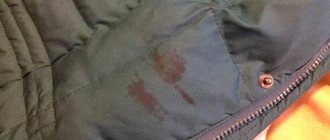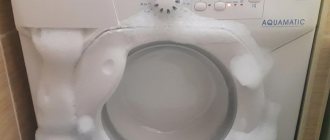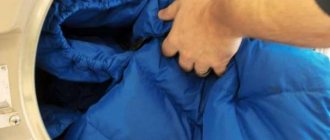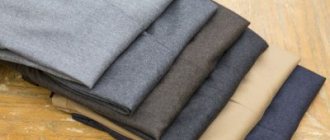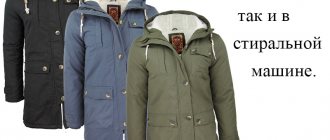Hiking equipment makes staying in natural conditions more comfortable. But products such as a tent or sleeping bag quickly become dirty and therefore require special care.
We have already written about how to wash a tent in a washing machine in the corresponding article. Below we will talk about caring for your sleeping bag. Let’s figure out whether it’s even possible to wash a sleeping bag in a washing machine and what detergents are suitable for gentle washing.
Can it be washed?
Even if you properly care for your sleeping bag, after 4-5 trips you will want to wash it. It doesn’t seem to smell like new anymore, and greasy spots have appeared. The question arises. Is it even possible to wash it? Yes. You can wash your sleeping bag, but it is better to do this no more than once a year. If you wash your sleeping bag more often, it will no longer retain heat.
It is possible, but carefully and not often.
This limitation is explained by the fact that during the washing process the insulation, which is one of the main heat insulators, will wrinkle. This applies to both natural and artificial materials. Each time it will be more difficult for it to restore its shape and properties, and the bag will become less and less warm after the next wash. If any individual dirt appears on the sleeping bag, it is better to get rid of it locally by rubbing it with a clothes brush, sponge or damp cloth using a soap solution.
Types of fillers
When washing, you need to consider the type of filler. Sleeping bags come with down, holofiber, synthetic padding, and cotton wool.
Pooh
It is much easier to eliminate a lump from fluff than from other components.
Considering that anything can happen on a hike, this is important.
Holofiber
These sleeping bags have excellent thermal properties. Synthetic fibers are thin, intertwined with each other, forming a dense but light mass.
Environmentally friendly material is not a breeding ground for bacteria and microbes.
Sintepon
Synthetic winterizer products are lightweight and can provide warmth, but only at outside temperatures down to -10 °C.
They are not durable, but they captivate with their cheapness.
cotton wool
A cotton sleeping bag is not in demand today. The products were relevant in Soviet times, when there was nothing else.
Cotton wool has only one drawback: it is dense, heavy and does not retain heat well. This filler creates excellent conditions for the proliferation of pathogenic bacteria, because it dries unevenly and clumps into lumps that are very difficult to separate.
Choosing a washing method
An automatic washing machine makes it possible to wash a sleeping bag without spending a lot of time and effort on it, as is the case with hand washing. It should be borne in mind that the sleeping bag, or rather its filler, does not tolerate very intense impacts, especially when wet. Therefore, if you have the time and energy for this procedure, then hand washing would be the best option. Automatic washing is only possible at low speeds with the spin function disabled. It is also worth considering the age of this equipment. If a sleeping bag has been used for quite a long time and the filling inside it has already become wrinkled and partially lost its thermal insulation properties, then automatic washing will completely “kill” it. In this case, the manual method is the only possible one.
Choose the “Hand” or “Delicate” wash mode. Do not turn on the Spin function.
RESULTS
RESULTS ¹ Ñ? RESULTS, RESEARCH Ò
- RESULTS ¾Ð¼ ÑиÑле, Ñ Ð¿Ð¾Ð¼Ð¾ÑÑÑ Ð¼Ð°Ñинки;
- RESULTS м ÑÑÐ¾Ð¸Ñ ÑÑÑого в кÑайнем ÑлÑÑае.
ÐÑвод пÑоÑÑой â ÑÑиÑка ÑазÑеÑена, но не ÑаÑе Ð ¾Ð´Ð½Ð¾Ð³Ð¾-двÑÑ Ñаз в год. What's wrong?
- RESULTS ;
- RESULTS â ÑÑо напÑÑмÑÑ Ð²Ð»Ð¸ÑÐµÑ Ð½Ð° ÑкÑплѰÑаÑи оннÑе ÑвойÑÑва;
- RESULTS елÑ.
RESULTS ¾ в ÑлÑÑае кÑайней необÑодимоÑÑи! RESULTS кой, ÑмоÑенной в мÑлÑном ÑаÑÑвоÑе. RESULTS ROCK.
What's wrong with you, what's wrong with you? RESULTS, ASSURANCE, ASSURANCE, RESULTS, SORRY! RESULTS µ
- RESULTS RESULTS ¸ и пÑли;
- RESULTS, RESEARCH ÑÑ Ð¾Ñ Ð¼Ð°Ñинной ÑÑиÑки â ÑÐºÐ°Ð½Ñ Ð¼Ð¾Ð¶ÐµÑ Ð½Ðµ вÑд RESEARCH. RESULTS;
- RESULTS 30-40 минÑÑ °Ðº Ñ Ð½ÐµÐ³Ð¾ ÑÑеÑÐµÑ Ð»Ð¸ÑнÑÑ Ð²Ð¾Ð´Ð°.
LOSS! RESPONSIBILITY, RESPONSIBILITY ROOM Oops!
What to wash with?
For both manual and automatic washing of a sleeping bag, the use of bulk detergents is prohibited. Such washing powders are very difficult to rinse out of the filler. To clean your sleeping bag from dirt, use only products in the form of gels or liquids. In this case, the choice of the necessary product depends on the type of filler. If down is used as insulation for a sleeping bag, then products are used that do not wash out “animal” fats from it, namely ReviveX Down Cleaner, Nikwax Down Wash, Granger's Down Cleaner and others. If padding polyester or holofiber is used, then ordinary liquid washing powder will do, but it should not contain conditioners or bleaches.
Look carefully at the inside label. It indicates the composition of the filler and recommended washing options.
Another acceptable detergent option for these purposes is special impregnation. It is applied to the product before placing it in the drum of a washing machine or other container and is washed out with water during the washing process, thereby eliminating all contaminants.
Care and operation
When camping and at home, keep the bag dry. Otherwise, in the first case, you will have to sleep in a damp sleeping bag, and in the second, there is a high risk of mold. Among other things, harmful bacteria appear and actively multiply in the raw product. Do not drink or eat in or near your sleeping bag. Air the product regularly for at least ten minutes.
Before using the attribute, place a sheet inside. It will absorb sweat and keep the product clean and presentable for longer. In addition, washing a sheet is easier, faster and safer than a sleeping bag. Instead of a sheet, you can buy a special underlay. It is more practical and convenient, since due to its secure fixation it will not slide off during sleep.
When folding the bag into a cover, make sure that there are no unnecessary or accidental folds or folds. Otherwise, the product will quickly wear out. Regular and competent care will ensure a long service life for the equipment and preserve the presentable appearance of the product for a long time.
Temperature
The water temperature when washing a sleeping bag should not exceed 40 degrees. The best option would be to wash at 30 degrees, but you should take into account the degree of contamination. If the bag is very dirty, then it will not be possible to wash it at a low temperature and in this case you will have to choose the highest possible one.
The water temperature should not exceed 40 degrees.
Also, to achieve the best result, the sleeping bag must be soaked for a while before washing. This will allow the water and used detergent to dissolve the dirt, thereby ensuring better removal.
We store it correctly
Proper storage is the key to the longevity of a sleeping bag. Make sure it is thoroughly dry before folding it. Storing a wet bag is strictly prohibited.
There are 3 most preferred storage methods:
- Hanging. If space allows, you can throw the bag on a rope and straighten it out as much as possible. This storage method will prevent crumpling and damage to the filler.
- Under the bed. Not a bad storage option. To do this, lay out the bag and cover it with a not too thick cloth to prevent dust from entering.
- In a pillowcase or special bag. Didn't the bag come with a spacious bag from the manufacturer? Spend your money and buy one at any travel store. Another way: carefully roll up the sleeping bag and pack it in a regular pillowcase. This option will suit those who do not have extra free space in the apartment. The main disadvantage of twisting is that the filler is wrinkled and after straightening it takes a long time to return to its original shape.
Washing a sleeping bag in an automatic machine
Possible in the “gentle wash” mode and without spinning. Using an automatic washing machine to wash a sleeping bag is only possible if hand washing does not allow you to completely remove all dirt. In order to minimize all the adverse effects of this procedure, it is necessary to select a gentle or delicate washing mode and turn off the spin cycle.
“Automatically spinning a sleeping bag in a washing machine is strictly prohibited. This procedure can lead to various deformities and damage."
After finishing washing, you should not take the item out of the machine immediately. It is necessary to wait a while for the unsqueezed water to flow out naturally.
How to do it right
In order for washing in an automatic machine to take place with the least consequences, it is necessary to adhere to a certain sequence of actions, namely:
- turn the sleeping bag inside out and shake it well, which will make it possible to get rid of sand and other dirt that is on the surface of the fabric;
- load it into the machine, add detergent and make all the appropriate settings for the washing mode, turn it on;
- After turning off the washing machine, wait 40 minutes for the water to drain.
Manufacturers' recommendations
Alexik's company, which specializes in making sleeping bags, gives a lot of recommendations.
The manufacturer notes that it is important not only to purchase quality products, but also to use them correctly
- ventilation of the product;
- washing frequency;
- fastening the bag;
- rinsing;
- drying out.
There are other important nuances that you should know in order to extend the life of the product.
Ventilation
When traveling, after each night's sleep, you need to lay the bag on stones, hang it on a tree or on another surface. This will remove excess moisture remaining on the fabric and eliminate human body odor.
Washing frequency
Knowing in what mode to wash the product does not mean that you should resort to manipulation after every short trip. Any filler will not withstand regular rinsing in water and drying.
The procedure causes wear of the down or other material. To restore the freshness of the bag, it is worth ventilating it and cleaning it with a dry brush to remove dust and small particles of dirt.
Once you notice a stain, only remove it. Washing is carried out as it becomes dirty, when the product already has an unpleasant odor and there are many different stains on it.
The frequency of such events is an individual matter; you need to look at the type of thing.
Do I need to fasten it?
It is advisable to fasten the sleeping bag before machine washing. Firstly, the snake can catch on the fabric and tear it, and secondly, the teeth deteriorate from water and detergents.
Sometimes after the procedure the clasp begins to come apart. In hand washing, you can do without fastening.
Rinsing
It is carried out in warm water without the use of additional softeners and flavors. Carry out the procedure until the water becomes clear.
Afterwards, the product should be left in the washing machine or bathtub for 30-40 minutes to allow it to flow around, a test squeeze of the edge of the sleeping bag should be performed to accurately understand whether all the detergent has gone, and then drying.
How to get rid of stains and streaks
This happens due to an excess of detergent used, or due to the fact that fluff has become loose.
In the first case, you should correctly calculate the amount of shampoo, otherwise you will have to rinse the product again. In the second case, you need to put 5-6 tennis balls in the drum of the washing machine, which will not allow the filler to get lost.
Socks folded one inside the other will do. Sometimes the stain is caused by using a bleach powder that should not be used.
Dry flat
Washing a bag is half the battle, you still need to dry it properly
It is especially important to dry down products by laying them out on a flat surface.
This will allow the sleeping bag to dry evenly and the down to remain in its place. A floor on which towels are laid, a table or a drying board is suitable.
Handwash
If the sleeping bag has already been washed several times and its characteristics have decreased, then it is better to wash this item by hand. To do this, you will need a large container, which is best suited for the bath itself. Before washing, it is also necessary to turn the bag inside out and shake well.
Step by step guide:
- lay out the sleeping bag at the bottom of the bathtub and fill it with water;
- climb into the bathtub with your feet and begin to trample the bag in the water for 15 minutes, then dangle the item in the water with your hands for another 15 minutes;
- drain the soapy water and add new water for rinsing;
- After the bag is completely rinsed of detergent, you need to drain all the water and let the remaining liquid drain on its own for 40 minutes.
Drying a sleeping bag
Drying a sleeping bag is a long and labor-intensive process. It usually takes from 2 days to 5 days. However, a sleeping bag made of holofiber or other synthetic material can dry out much faster.
What is important to pay attention to?
- Horizontal surface. The sleeping bag must be unzipped and laid out lengthwise on any horizontal plane. It is most convenient to use an ironing board or a wide window sill. If water is still dripping from the bag, place paper or newspapers underneath it.
- Well ventilated area. This way the canvas will dry faster.
- The optimal room temperature for drying is 17-25 degrees. However, you should not place your sleeping bag near heated radiators or heaters. Also avoid direct sunlight.
- Particular attention should be paid to the down filling. After all, down tends to clump after washing, so the sleeping bag needs to be straightened regularly.
- Once your sleeping bag is completely dry, be sure to shake it and fluff up the lining.
Manually
You can either wash your tent in the machine very rarely or not at all. What should tourists who actively use a tent do, what should they do if the tent requires maintenance quite often? Experts advise resorting to dry cleaning or, as a last resort, hand washing.
If you want to save the item, it is better to do without washing at all, but if this is not possible, we will do the following.
- We spread the tent on the grass.
- We water the tent with water, and then rub it with a piece of laundry soap without unnecessary mechanical impact.
- Then you need to use someone's help, one person will water the tent with water, while you rub it with a sponge.
- Next, turn the tent over to the other side and do the same, rub it with soap and wash it off along with the dirt.
- Dry the tent and then spray it thoroughly with anti-odor spray.
There are quite a lot of anti-odor sprays on sale; you can take any one, for example Toko Proff. It will rid the tent fabric of the smell of mold and laundry soap, but if such odors do not bother you, you can do without the spray. Also remember that washing a tent is not so bad; you still need to check its protective layer after washing and, if necessary, restore it.
Let's do without washing
If you care about the safety of your tent, it is better not to wash it, but to clean it. Dry cleaning without unnecessary mechanical impact is the safest, but it does not remove dirt and odor as much as washing. What should be done?
After a hike, a wet and dirty tent should be hung in a dry, ventilated place and allowed to dry thoroughly. The fabric of a good tent is covered with sun-protective and moisture-resistant impregnation, so you can dry it even in direct sunlight, but it is better if you find a shaded place for this.
So, the dry tent needs to be straightened and inspected. Dried dirt stains and debris should be brushed off using a very soft brush or cloth. If stains remain in several places, you can treat them with a sponge soaked in soapy water. After such procedures, the tent is thoroughly dried again and then put into the storage room until the next trip.
So, it is theoretically possible to wash a tent in a machine, and it may not suffer from just one wash. But you must remember that when you wash a tent, you are taking a big risk. Washing can damage the protective layer of the fabric, after which the tent will become unusable. So, decide for yourself whether to wash it or not; our advice is to wash it only as a last resort, after dry cleaning has failed. Good luck!

